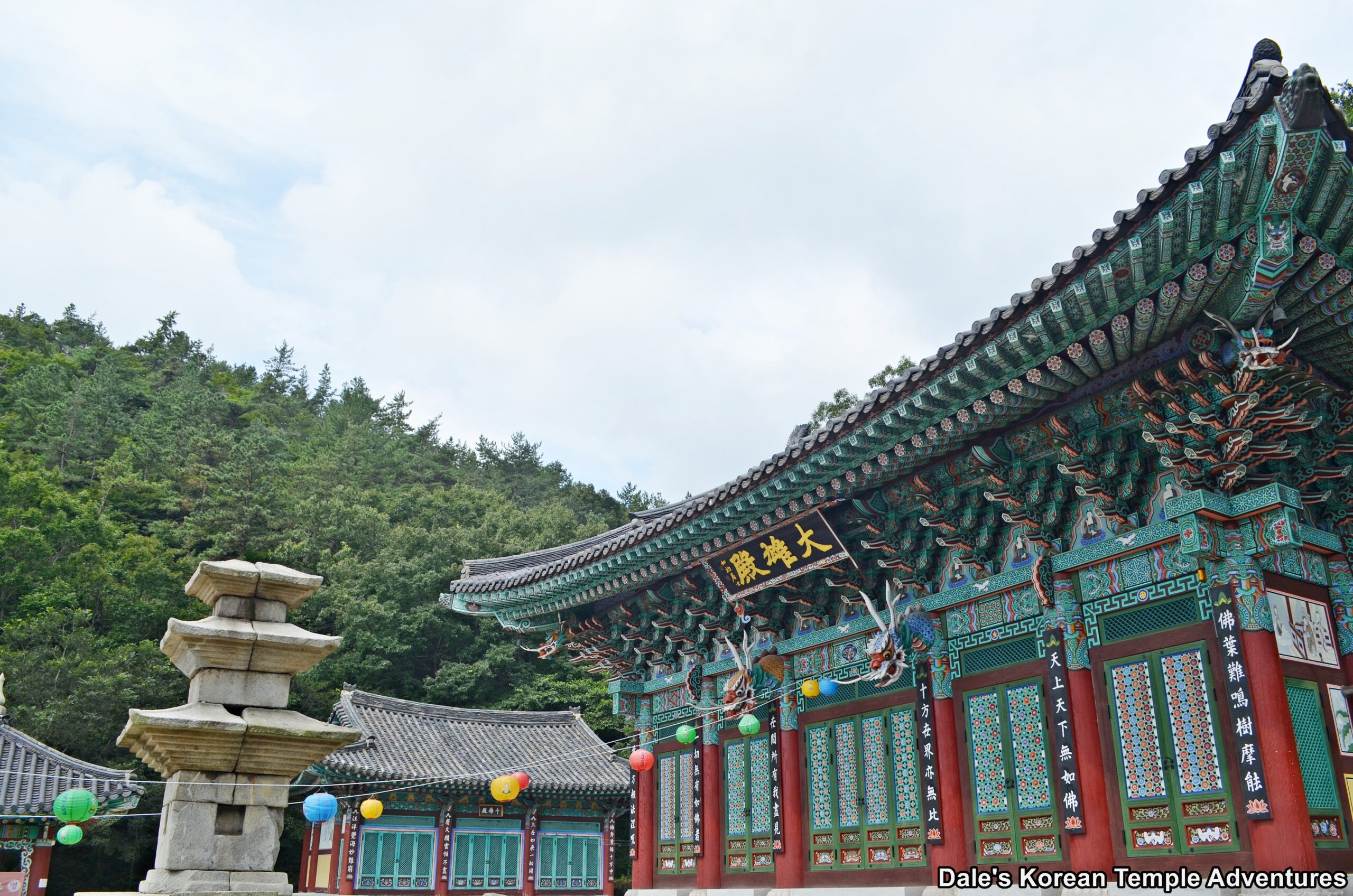
Temple History
Geumgoksa Temple is located in northern Gangjin, Jeollanam-do in the foothills of Mt. Ilbongsan (411.8 m). According to some, Geumgoksa Temple was first founded during the reign of Queen Seondeok of Silla (r. 632 – 647 A.D.) by a Silla monk named Milbon. At this time, it’s believed that the temple was called Seongmunsa Temple. However, this story seems unlikely, as the land that Geumgoksa Temple is situated upon belonged to the Baekje Kingdom (18 B.C. – 660 A.D.). So it doesn’t make a ton of sense that a Silla monk would travel to Baekje Kingdom land to found a Buddhist temple.
Much later, and according to the “Donggukyeojiseungram,” which was compiled in 1481, the temple was finally referred to as Geumgoksa Temple. In 1592, Geumgoksa Temple was used as a training ground for part of the Righteous Army during the Imjin War (1592-98). Geumgoksa Temple was destroyed by fire during the Imjin War by the invading Japanese. The temple wouldn’t be rebuilt until Japanese Colonial Rule (1910-45) upon the former temple site. The temple would further be rebuilt and expanded in 1969. Then in 1984, Geumgoksa Temple became a Taego-jong Order temple.
As for the name of the temple, it’s called Geumgoksa Temple because there was a former gold mine in the area. In fact, there is a cave, whose depths are unknown, next to a stream near the temple grounds. This could be the source of the temple’s name.
Geumgoksa Temple is home to a Korean Treasure, the “Three-Story Stone Pagoda of Geumgoksa Temple,” which is Korean Treasure #829.
Temple Layout
You first make your way up towards Geumgoksa Temple through a couple of large boulders on either side of the road leading up to the temple. To the right of the temple parking lot is a serene stream. Up a large set of stairs, you’ll find the five metre tall “Three-Story Stone Pagoda of Geumgoksa Temple.” The large pagoda consists of a single-story stylobate at the base. Above the stout base is the body, which stands three-stories in height. Unfortunately, the finial which once adorned the top of the pagoda has been lost through the passage of time, and the pagoda has been damaged in part throughout. More specfically, the stylobate consists of four pillars at the edge with a flat stone between these pillars. This style of construction with corner pillars without a pattern engraved on it is similar to the “Five-Story Stone Pagoda at Jeongnimsa Temple Site” in Buyeo, Chungcheongnam-do. The first story of this pagoda, the “Three-Story Stone Pagoda of Geumgoksa Temple,” has a niche on all four sides. Typically in a wooden pagoda, the niche would function as a place to house an image of a Buddha. However, in a stone structure, it appears to be more decorative than anything. Overall, the pagoda has beautiful proportions. The “Three-Story Stone Pagoda of Geumgoksa Temple” was built during the Goryeo Dynasty (918-1392); however, it still retains some stylistic aspects from the Baekje Kingdom (18 B.C. – 660 A.D.).
Framing the “Three-Story Stone Pagoda of Geumgoksa Temple” is the Daeung-jeon Hall. The exterior walls to the Daeung-jeon Hall are adorned with fading Shimu-do (Ox-Herding Murals) and Palsang-do (The Eight Scenes from the Buddha’s Life). Of the two, the Shim-do are placed below those of the Palsang-do. At the front of the main hall, you’ll find two decorative dragons on either side of the signboard with long, white whiskers. There is also some beautiful floral latticework adorning the front of the Daeung-jeon Hall, as well. Stepping inside the main hall, you’ll find a triad of statues under a large, red canopy. Resting in the centre of this triad is an image of Seokgamoni-bul (The Historical Buddha). This central statue is joined on either side by Munsu-bosal (The Bodhisattva of Wisdom) and Bohyeon-bosal (The Bodhisattva of Power). On either side of the main altar are a pair of paintings. To the right is an image dedicated to Dokseong (The Lonely Saint); and to the left, you’ll find an image dedicated to Chilseong (The Seven Stars). To the left of the mural dedicated to Chilseong is a mural dedicated to Sanshin (The Mountain Spirit), who rests on the back of a rather large tiger. And to the right of the mural dedicated to Dokseong is a Jijang-bosal (The Bodhisattva of the Afterlife) mural. The final mural in the Daeung-jeon Hall is a Shinjung Taenghwa (Guardian Mural) hanging on the far left wall.
To the immediate right of the Daeung-jeon Hall is the Jijang-jeon Hall. The exterior walls to this shrine hall; which, rather surprisingly, doesn’t have a signboard above its central entranceway, are adorned with various murals that include an all-white Gwanseeum-bosal (The Bodhisattva of Compassion), as well as a set of murals depicting the life-cycle. Stepping inside this shrine hall, you’ll find an image of Jijang-bosal (The Bodhisattva of the Afterlife) on the main altar. This central image is accompanied by the Siwang (The Ten Kings of the Underworld).
To the left of the Daeung-jeon Hall, on the other hand, is the Cheonbul-jeon Hall. The exterior walls are adorned with murals dedicated to the Nahan (The Historical Disciples of the Buddha). The front doors to this shrine hall are adorned with cartoonish Gwimyeon (Monster Masks). Stepping inside the Cheonbul-jeon Hall, you’ll find a thousand green porcelain images of the Buddha. Resting on the main altar, and fronting these one thousand green Buddhas, is a large solitary image of Seokgamoni-bul (The Historical Buddha).
The final structure at Geumgoksa Temple that visitors can explore is the Jong-ru Pavilion out in front of the Cheonbul-jeon Hall. This wooden pavilion houses a large bronze bell. The other three traditional Buddhist percussion instruments are absent from this Jong-ru Pavilion.
How To Get There
From the Gangjin Intercity Bus Teriminal, you’ll need to take the “Nongeo-chon – 농어촌 6” bus or the “Nongeo-chon – 농어촌 12” bus. After 10 stops, or 15 minutes, you’ll need to get off at the “Geumgoksa – 금곡사” bus stop. After that, you’ll be right at the temple.
Overall Rating: 6/10
Geumgoksa Temple is beautifully located in the folds of the base of the mountain with a stream to the east. Besides its beautiful location, the obvious highlight to the temple is the Goryeo-era “Three-Story Stone Pagoda of Geumgoksa Temple.” While partially damaged, the three-story structure still exudes its original beauty. In addition to this welcoming pagoda, the main hall beautiful modern depictions of the three most popular shaman deities. Also have a look up at the signboard of the Daeung-jeon Hall at the large, whiskered decorative dragons.
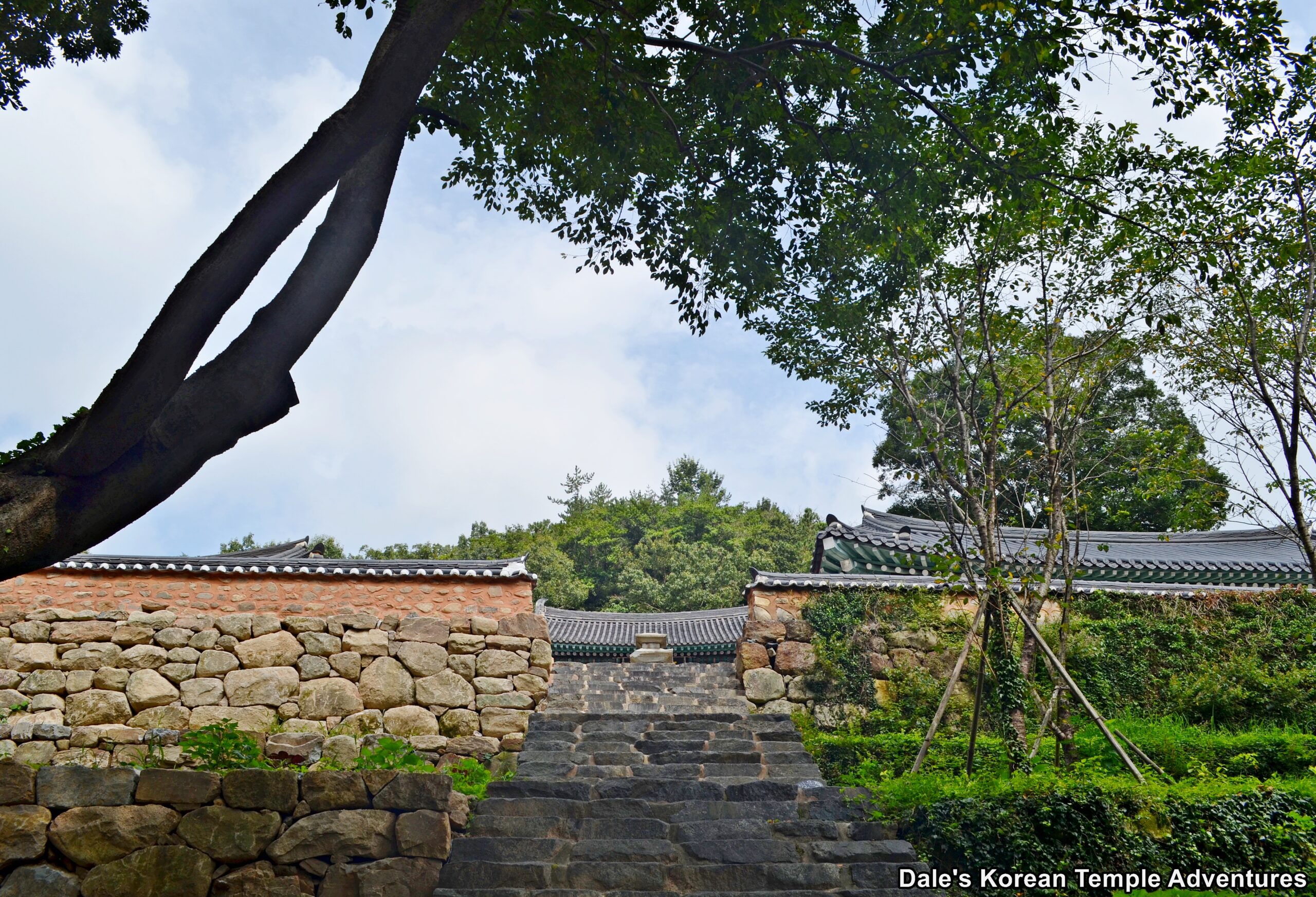
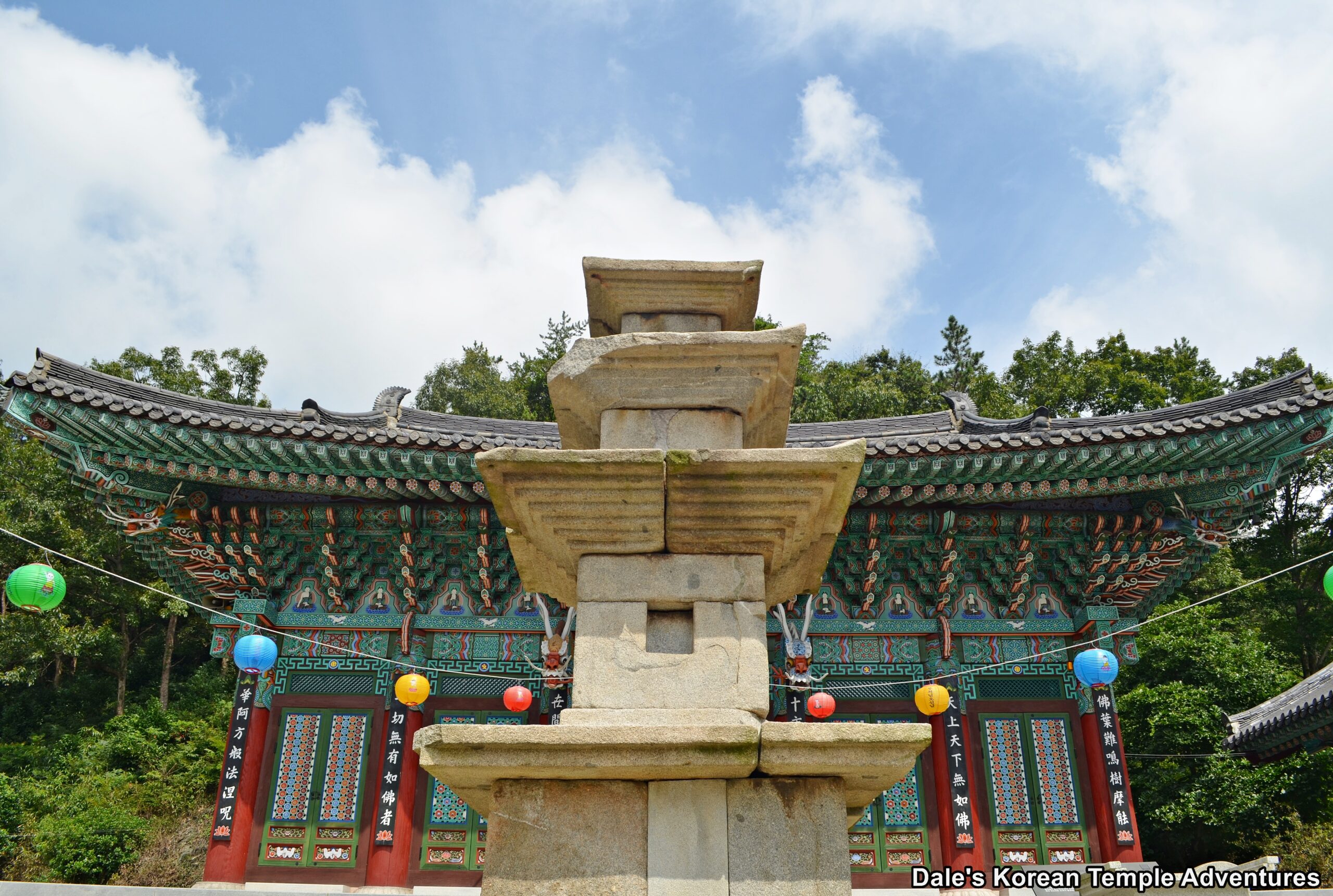
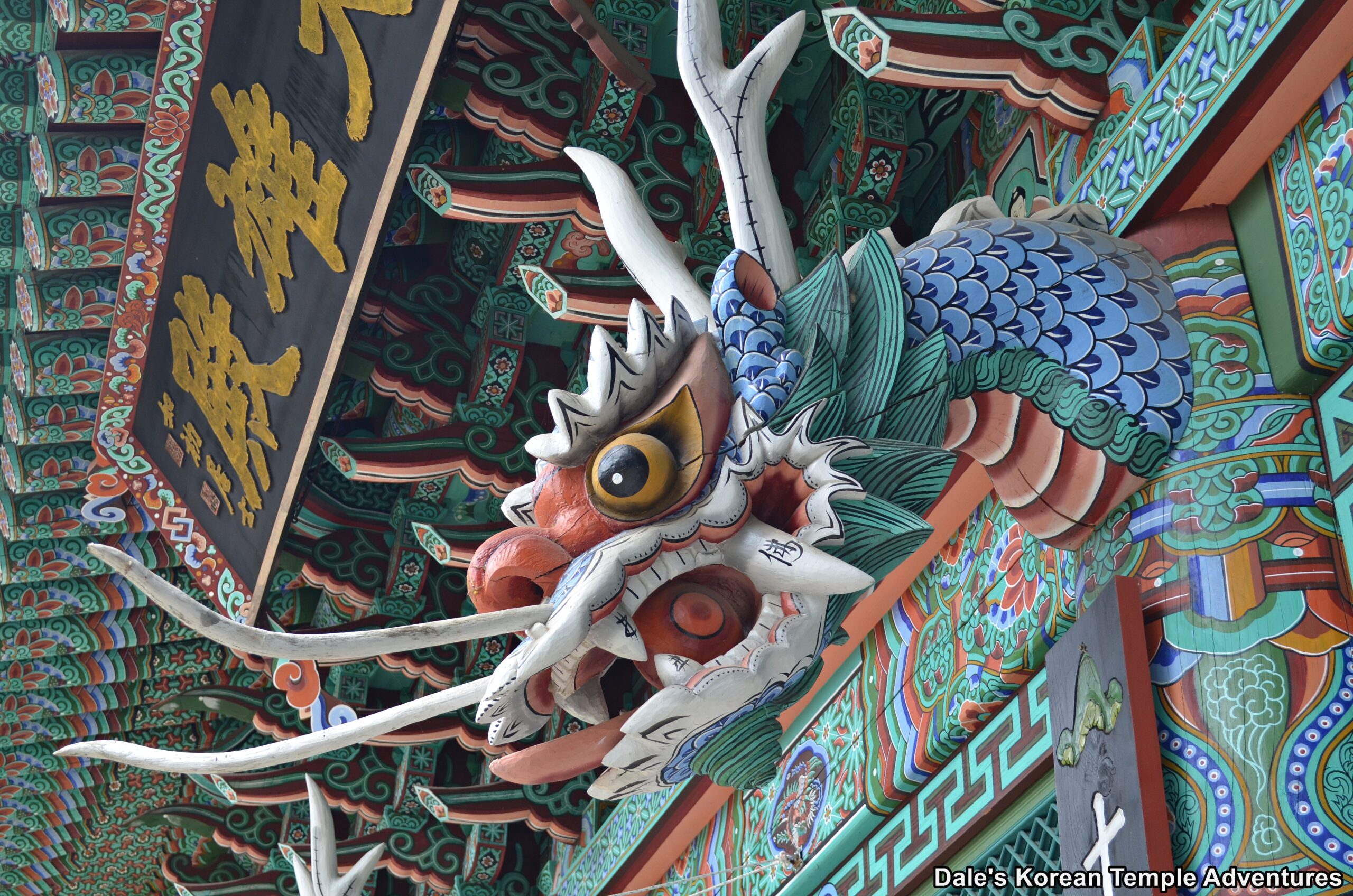
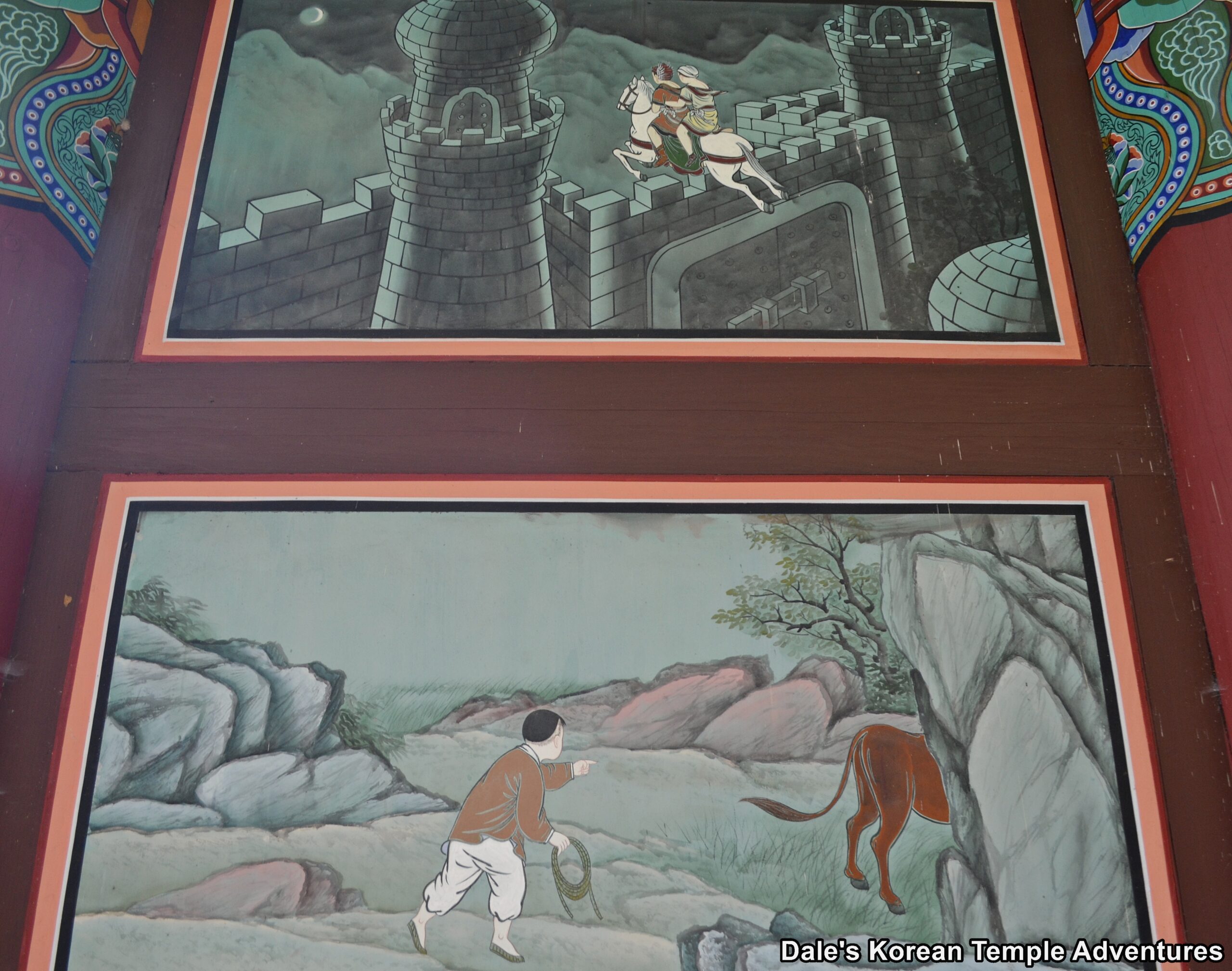
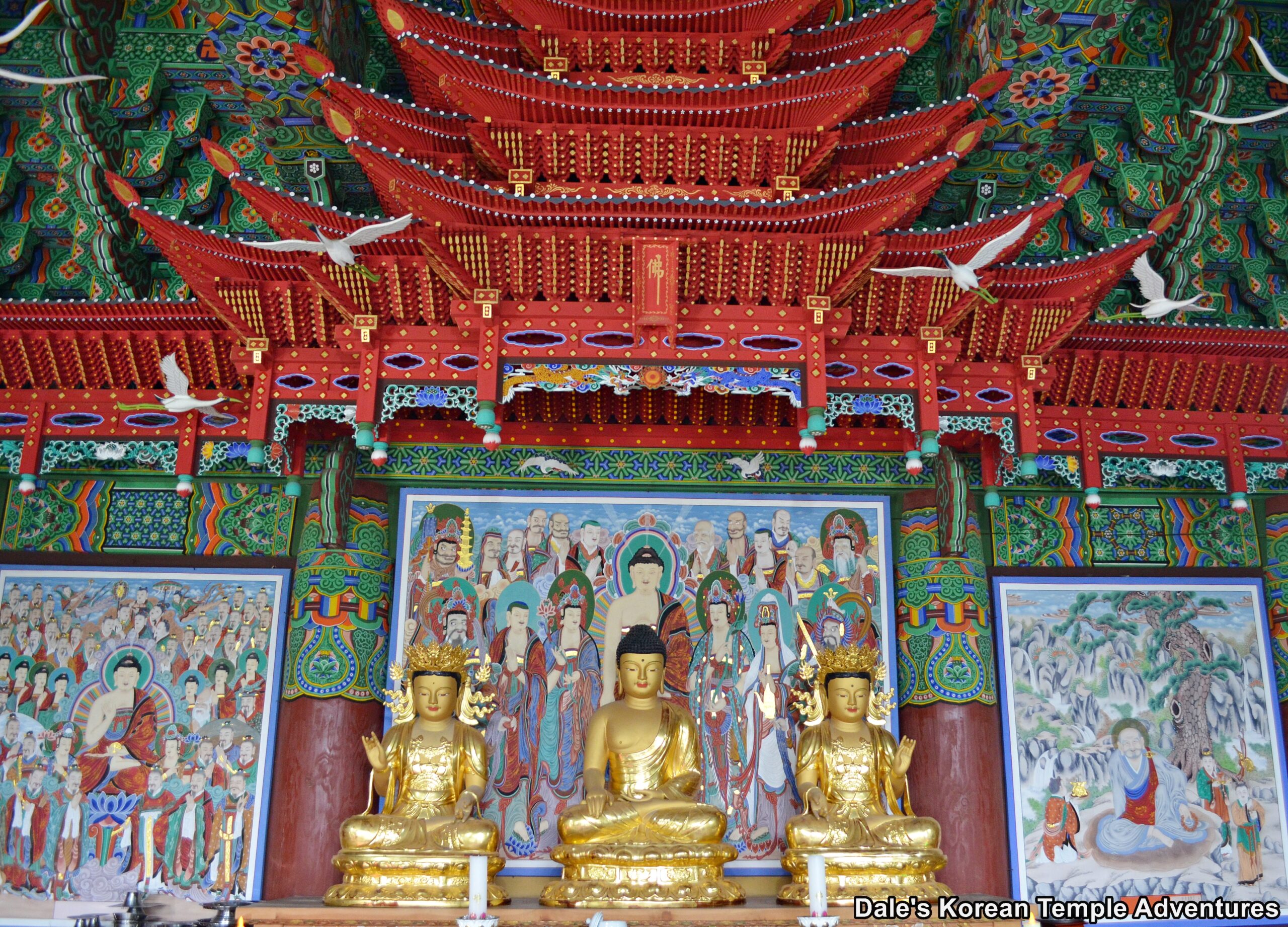
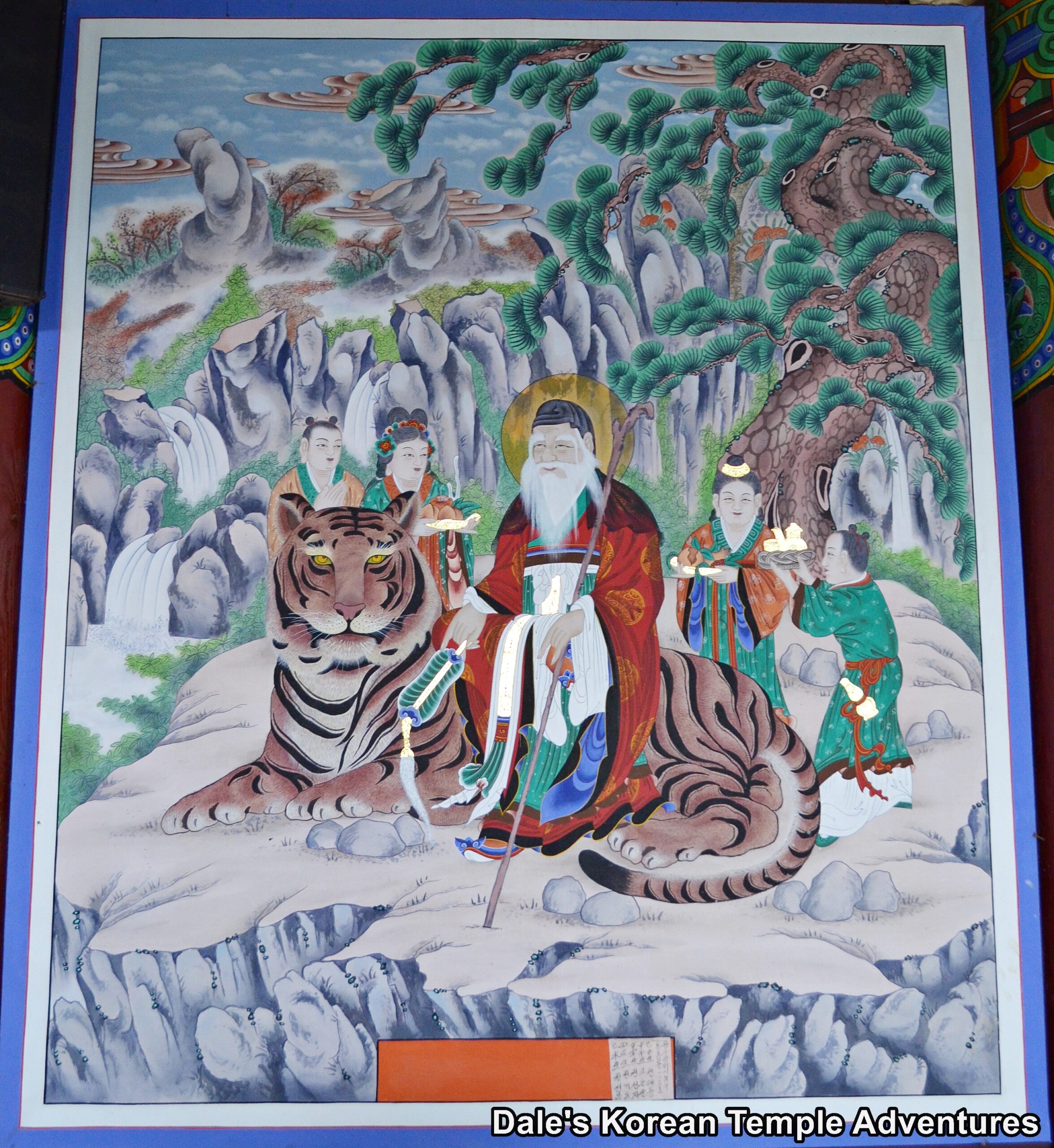

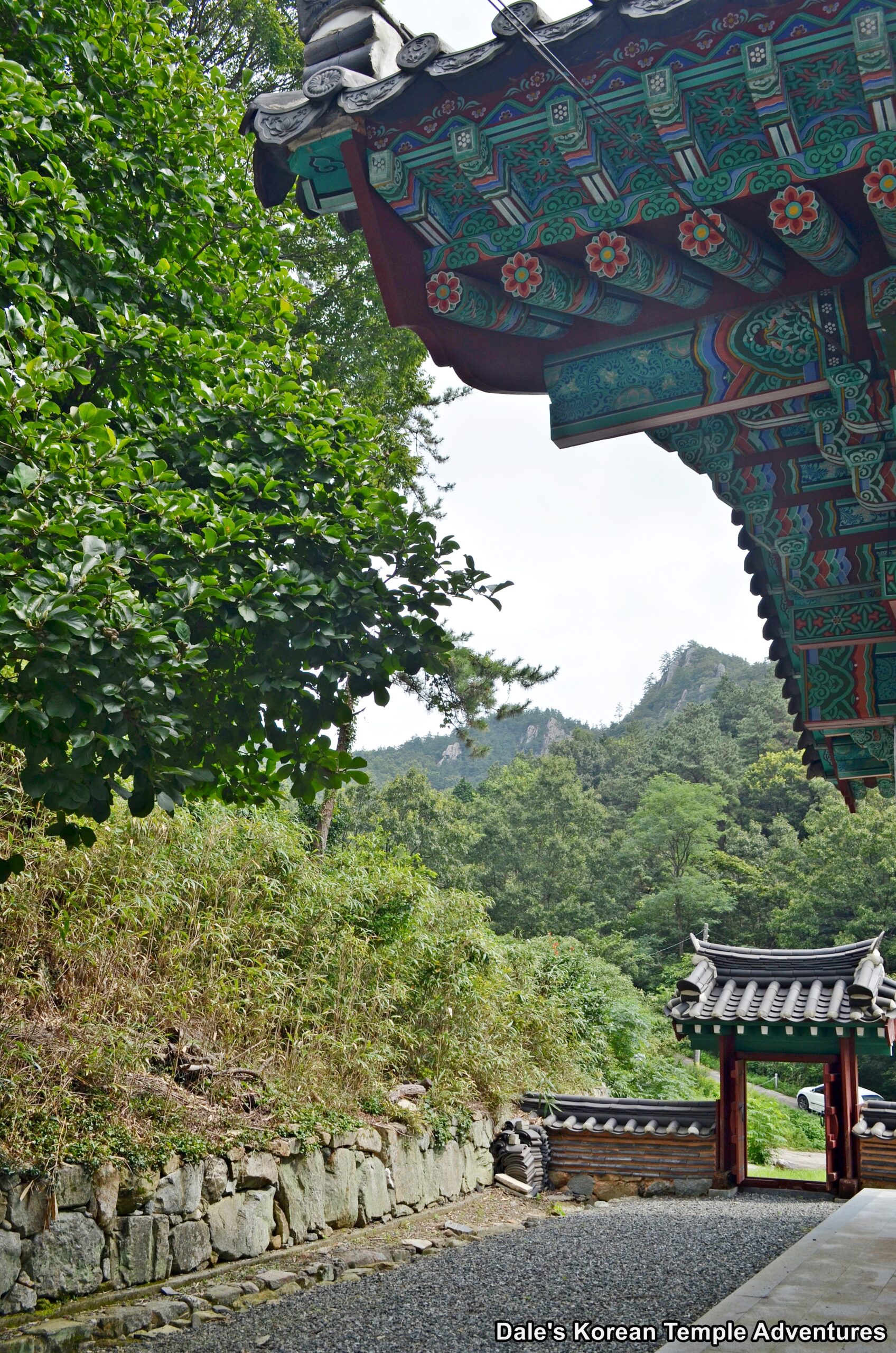
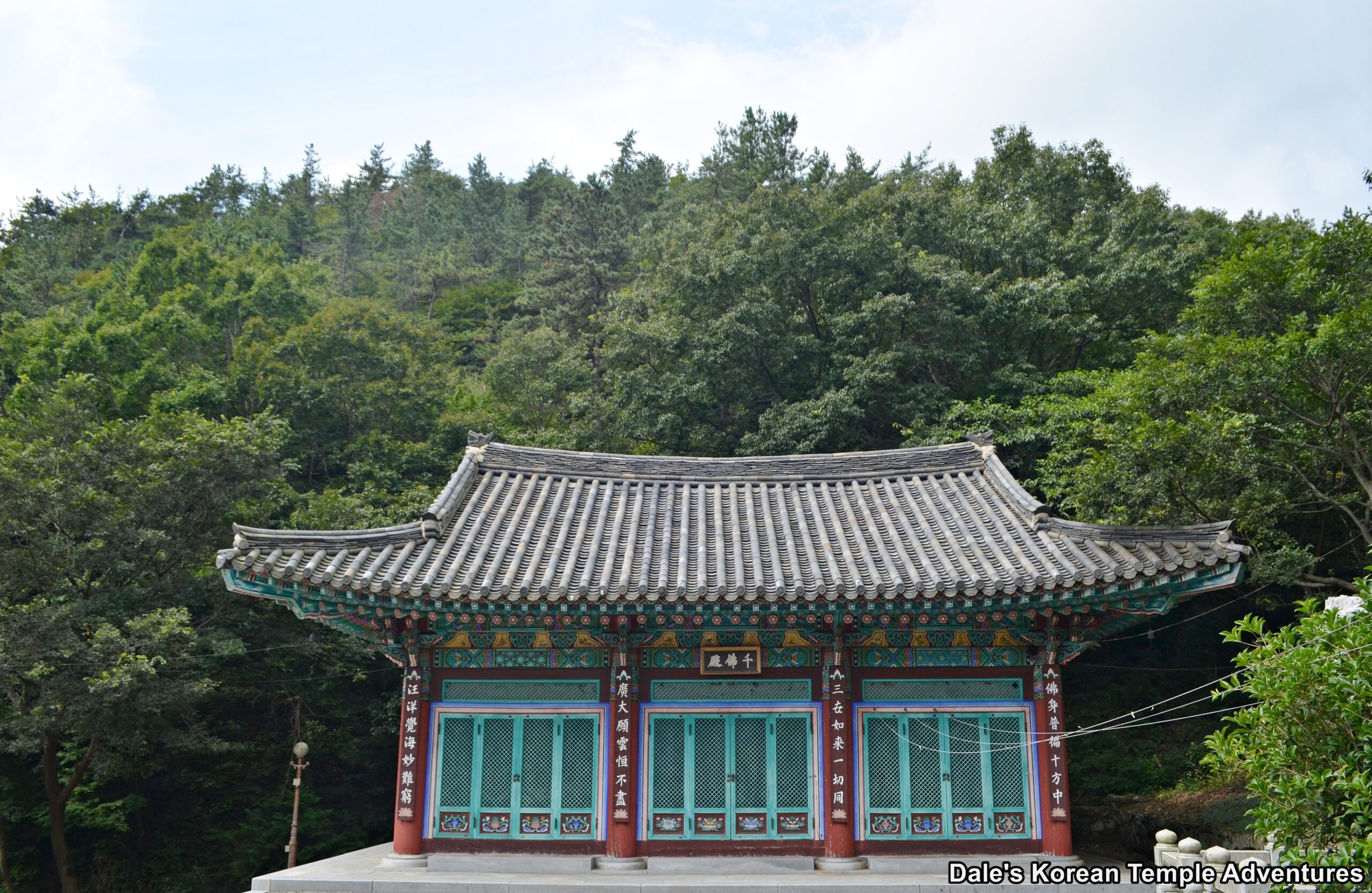
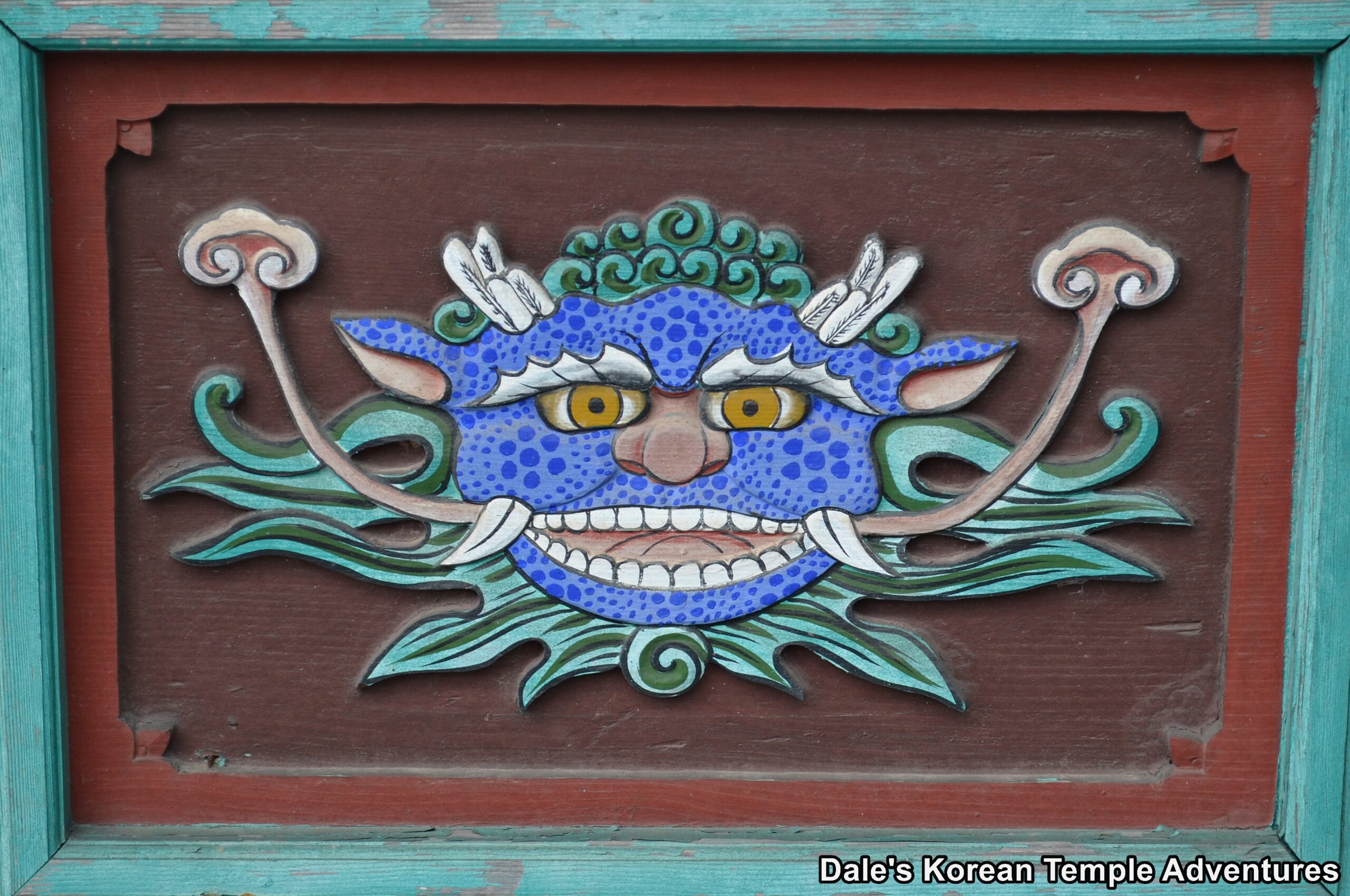
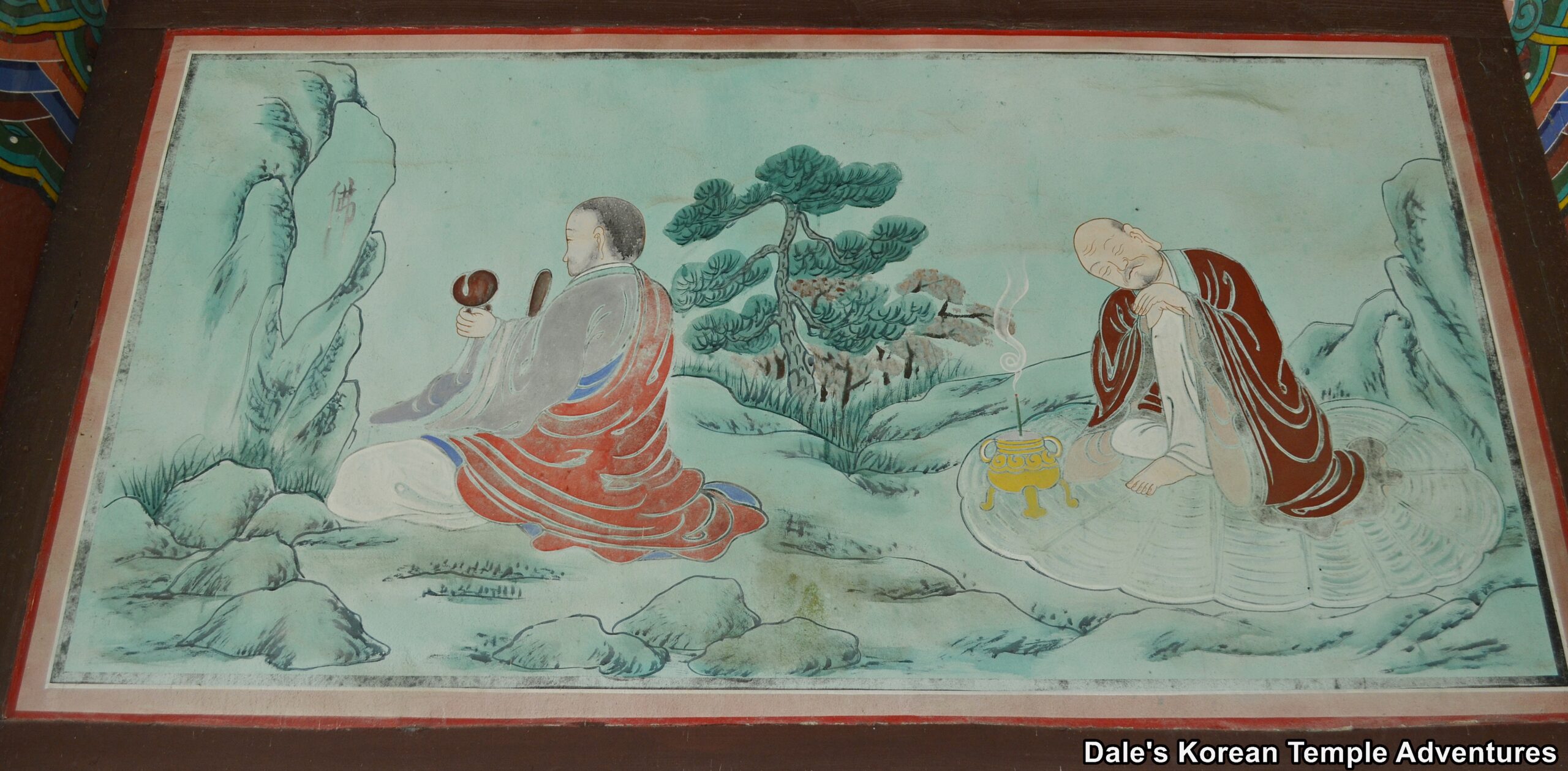
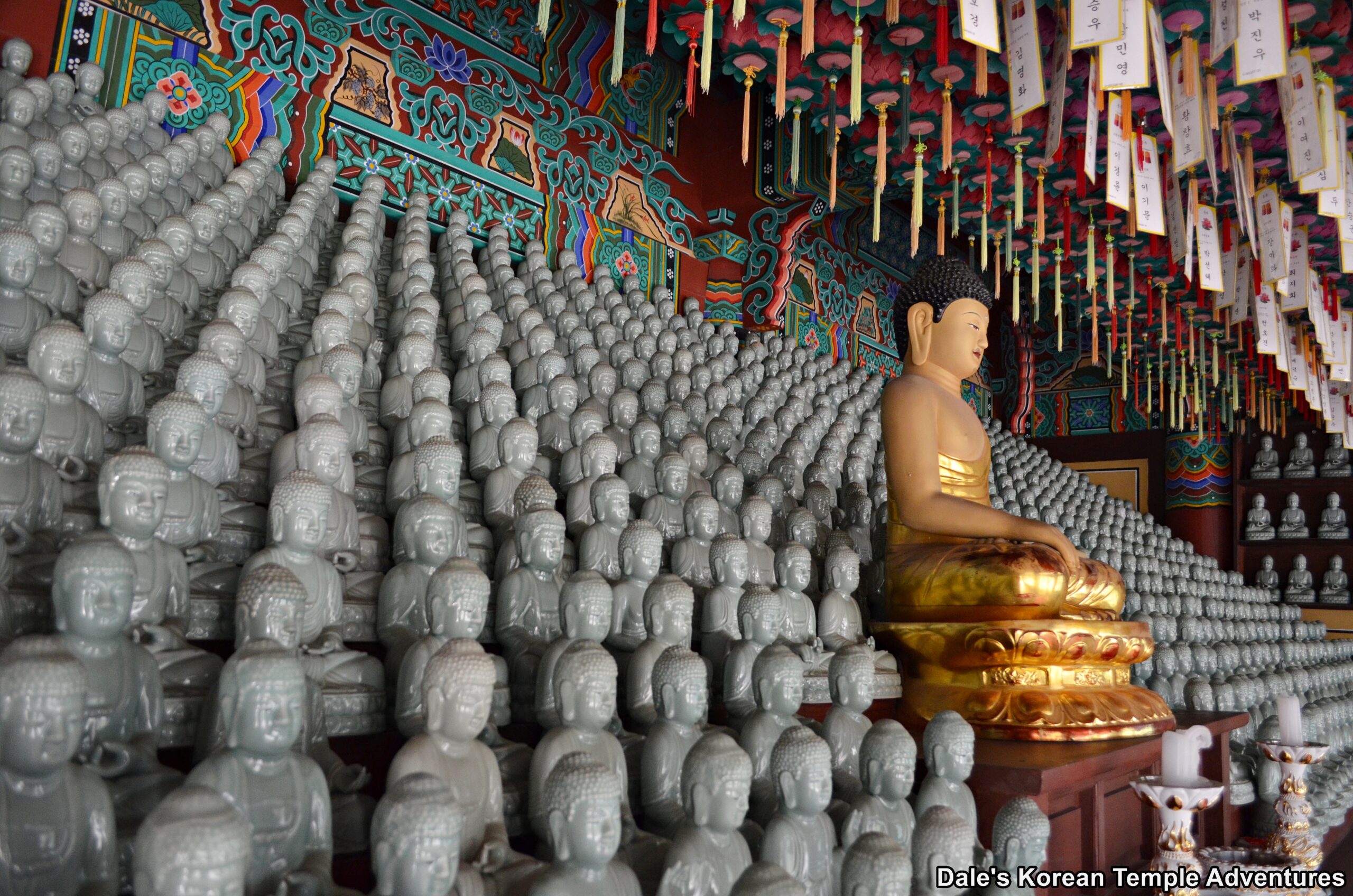

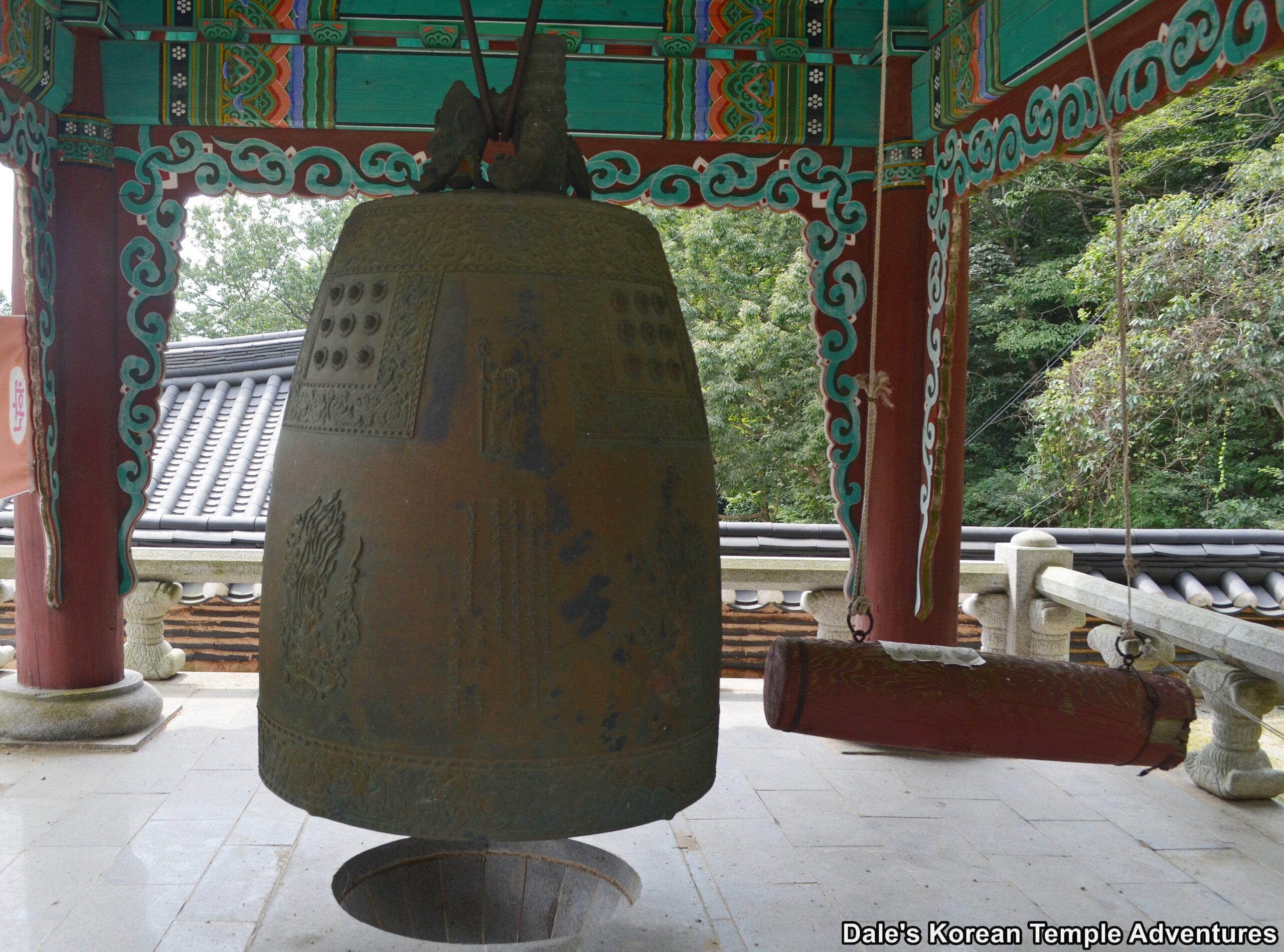


Recent comments